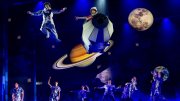On july 16, Fletcher University Professor Henry Louis Gates Jr. returned from Logan Airport to the Harvard-owned house he rents on Ware Street. The front door was stuck, so he and the driver who brought him home set about forcing it open. A passerby became concerned that something untoward might be happening; at her behest, another passerby dialed 911. Sergeant James Crowley, of the Cambridge police department, responded to the call.
From those unremarkable beginnings a remarkable nationwide furor arose. Crowley, assuming that he was investigating a breaking-and-entering, sought identification; the exchange between officer and professor somehow escalated; and Gates ended up being arrested for disorderly conduct and handcuffed.
After various negotiations, the charges were dropped on July 21, and a statement issued: “The City of Cambridge, the Cambridge Police Department, and Professor Gates acknowledge that the incident of July 16, 2009, was regrettable and unfortunate. This incident should not be viewed as one that demeans the character and reputation of Professor Gates or the character of the Cambridge Police Department. All parties agree that this is a just resolution to an unfortunate set of circumstances.”
That might have put an end to the matter but for three factors. First, Crowley’s report on the incident indicated that he was responding to a call identifying two “black males” as potential intruders, suggesting that race had figured into the summons to the police (but see below). Second, Gates continued to speak out after the official statement, criticizing Crowley and demanding an apology.
And third, at the end of a news conference on July 22 focused on healthcare reform, President Barack Obama, J.D. ’91, responded to a question about the incident by saying that he did not know all the facts, but that the Cambridge police had acted “stupidly” in arresting Gates after he had demonstrated he was in his own home. The ensuing uproar led to retractions, clarifications, and ultimately a White House “beer summit” on July 30, at which Obama, Vice President Joe Biden, Crowley, and Gates talked things over. (America’s humorists weighed in: Andy Borowitz ’80 had Obama proclaiming “Drink a Beer with Someone Who Arrested You Day.” The Onion had Crowley accidentally arresting Gates again as he “observed an unidentified black male sitting near Mr. Obama…” in the Oval Office. Editorial cartoonist Mike Luckovich had Gates and Crowley shouting at each other across Obama’s desk: “Tastes Great!!!” “Less Filling!!!”)
If the exchanges did little to advance any hoped-for national dialogue on race, they did bring out more facts. Crowley was identified by colleagues as an exemplary officer previously tasked with teaching other policemen how to avoid racial profiling in performing their duties—and a black officer at the scene of the arrest gave his full support to Crowley’s handling of the incident.
Finally, a bystander who was peripherally involved, but who suffered collateral damage from the uproar, was fully exonerated after the fact. The 911 call was placed by a Harvard Magazine employee who had been out walking at lunchtime (the magazine’s office is also on Ware Street). The police report on the incident, which became public, inexplicably did not initially redact her name or other identifying information (the usual practice)—including her phone number. Because the police report seemed to indicate that she had described the suspects in the incident by their race, she was subjected to a barrage of threatening calls and e-mails and relentless news-media attention at home and at work. In fact, the transcript of the 911 call, released on July 27, made clear that she had never invoked race and that she had even raised the possibility that the suspected intruders were simply having trouble with the house key.
Although many questions about the whole incident—as refracted through the media and national sensitivities (and biases) about race—remain unresolved, this one is put to rest: it began with a proper, Good Samaritan call to the police, motivated by a desire to avert a possible crime or personal injury.








